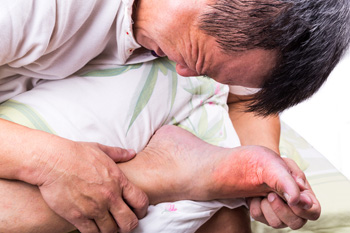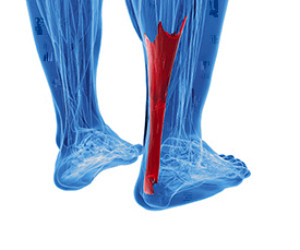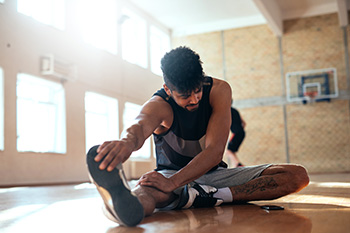Columbus: (614) 866-2477
Gahanna: (614) 939-9330
Lancaster: (740) 653-2656
Newark: (740) 344-8286
North Gahanna: (614) 478-2111
East Columbus: (614) 235-2323
Westerville: (614) 939-9330
Dublin: (614) 339-2000
Pickerington: (614) 545-4321
Lancaster: (740) 653-2656
Items filtered by date: July 2023
Possible Causes of Hammertoe

Hammertoe is easy to notice. It is a foot condition that causes the second or third toe to bend up at the middle joint and may be caused by shoes that are the incorrect size. This is a common condition among people who wear high heels or tight shoes, and in severe cases, it may be difficult to walk. Many people develop corns on top of the hammertoes, caused by the toes constantly rubbing against the top of the shoe. In mild cases, some stretches can gradually straighten the toes. This can be coupled with wearing protective pads on top of the toes, which may help reduce friction. Some people choose to wear orthotics, which may help realign the foot. If you have developed hammertoe, it is strongly suggested that you consult with a podiatrist who can effectively diagnose and treat this condition.
Hammertoes can be a painful condition to live with. For more information, contact one of our podiatrists of Foot & Ankle Specialists of Central Ohio. Our doctors will answer any of your foot- and ankle-related questions.
Hammertoe
Hammertoe is a foot deformity that occurs due to an imbalance in the muscles, tendons, or ligaments that normally hold the toe straight. It can be caused by the type of shoes you wear, your foot structure, trauma, and certain disease processes.
Symptoms
- Painful and/or difficult toe movement
- Swelling
- Joint stiffness
- Calluses/Corns
- Physical deformity
Risk Factors
- Age – The risk of hammertoe increases with age
- Sex – Women are more likely to have hammertoe compared to men
- Toe Length – You are more likely to develop hammertoe if your second toe is longer than your big toe
- Certain Diseases – Arthritis and diabetes may make you more likely to develop hammertoe
Treatment
If you have hammertoe, you should change into a more comfortable shoe that provides enough room for your toes. Exercises such as picking up marbles may strengthen and stretch your toe muscles. Nevertheless, it is important to seek assistance from a podiatrist in order to determine the severity of your hammertoe and see which treatment option will work best for you.
If you have any questions, please feel free to contact our offices located in Gahanna, Newark, Columbus, and Lancaster, OH . We offer the newest diagnostic and treatment technologies for all your foot care needs.
Causes of Gout

Gout is a painful form of arthritis that commonly affects a joint in the big toe, but also occurs in other joints of the body. Attacks of gout, called flare-ups, come on suddenly and frequently occur during sleeping hours. They are characterized by redness, swelling, heat, and constant pain. Gout is mainly caused by an overabundance of uric acid, which is formed during the breakdown of purines in the system. Eating foods that contain high levels of purines, including red meats, seafood, alcohol, and sugary drinks, can set off gout attacks. Crystals of uric acid can build up in the joints, resulting in inflammation and severe pain. Gout may be associated with kidney disease, obesity, and heart disease, as well as from a hereditary disposition. While it is not curable, there are ways to manage it and lower the risk of experiencing gout. It is important to control gout as recurring attacks can damage joints and tendons. Reducing the amount of uric acid is the number one way to treat gout. Certain medications, such as colchicine and non-steroidal anti-inflammatories, can help to reduce the effects of gout. For more information about gout treatments, it is suggested that you make an appointment with a podiatrist.
Gout is a painful condition that can be treated. If you are seeking treatment, contact one of our podiatrists from Foot & Ankle Specialists of Central Ohio. Our doctors will treat your foot and ankle needs.
What Is Gout?
Gout is a form of arthritis that is characterized by sudden, severe attacks of pain, redness, and tenderness in the joints. The condition usually affects the joint at the base of the big toe. A gout attack can occur at any random time, such as the middle of the night while you are asleep.
Symptoms
- Intense Joint Pain - Usually around the large joint of your big toe, and it most severe within the first four to twelve hours
- Lingering Discomfort - Joint discomfort may last from a few days to a few weeks
- Inflammation and Redness -Affected joints may become swollen, tender, warm and red
- Limited Range of Motion - May experience a decrease in joint mobility
Risk Factors
- Genetics - If family members have gout, you’re more likely to have it
- Medications - Diuretic medications can raise uric acid levels
- Gender/Age - Gout is more common in men until the age of 60. It is believed that estrogen protects women until that point
- Diet - Eating red meat and shellfish increases your risk
- Alcohol - Having more than two alcoholic drinks per day increases your risk
- Obesity - Obese people are at a higher risk for gout
Prior to visiting your podiatrist to receive treatment for gout, there are a few things you should do beforehand. If you have gout you should write down your symptoms--including when they started and how often you experience them, important medical information you may have, and any questions you may have. Writing down these three things will help your podiatrist in assessing your specific situation so that he or she may provide the best route of treatment for you.
If you have any questions, please feel free to contact our offices located in Gahanna, Newark, Columbus, and Lancaster, OH . We offer the newest diagnostic and treatment technologies for all your foot care needs.
The Function of the Achilles Tendon

The Achilles tendon is located in the back of the lower leg and connects the heel to the calf muscles. An injury can cause this tendon to become torn or inflamed, which often produces severe pain and discomfort. People who increase speed and distance too quickly while running may be prone to incurring an Achilles tendon injury, and this and similar activities will have to temporarily stop as the tendon heals. The Achilles tendon is responsible for pointing and flexing the foot and is instrumental while walking and running. Treatment generally begins with resting the affected foot, and it may help to take over the counter pain medications for mild relief. Many people will seek medical care for this type of injury, which can start by having a diagnosis performed. This can consist of having an X-ray done, which can determine if there is a bone injury. Once the Achilles tendon has healed, mild stretches can be performed, which may help to restore strength to the leg. If you have experienced this type of injury, it is strongly suggested that you confer with a podiatrist who can help you to manage this condition.
Achilles tendon injuries need immediate attention to avoid future complications. If you have any concerns, contact one of our podiatrists of Foot & Ankle Specialists of Central Ohio. Our doctors can provide the care you need to keep you pain-free and on your feet.
What Is the Achilles Tendon?
The Achilles tendon is a tendon that connects the lower leg muscles and calf to the heel of the foot. It is the strongest tendon in the human body and is essential for making movement possible. Because this tendon is such an integral part of the body, any injuries to it can create immense difficulties and should immediately be presented to a doctor.
What Are the Symptoms of an Achilles Tendon Injury?
There are various types of injuries that can affect the Achilles tendon. The two most common injuries are Achilles tendinitis and ruptures of the tendon.
Achilles Tendinitis Symptoms
- Inflammation
- Dull to severe pain
- Increased blood flow to the tendon
- Thickening of the tendon
Rupture Symptoms
- Extreme pain and swelling in the foot
- Total immobility
Treatment and Prevention
Achilles tendon injuries are diagnosed by a thorough physical evaluation, which can include an MRI. Treatment involves rest, physical therapy, and in some cases, surgery. However, various preventative measures can be taken to avoid these injuries, such as:
- Thorough stretching of the tendon before and after exercise
- Strengthening exercises like calf raises, squats, leg curls, leg extensions, leg raises, lunges, and leg presses
If you have any questions please feel free to contact our offices located in Gahanna, Newark, Columbus, and Lancaster, OH . We offer the newest diagnostic tools and technology to treat your foot and ankle needs.
Plantar Warts Can Be Treated!
Effective Stretches May Help to Prevent Running Injuries

People who enjoy running are all too familiar with the fear of incurring a running injury. The majority of running injuries can be prevented when simple strategies are implemented. These are the same techniques for all runners, ranging from weekend warriors to people who run several marathons. Research has shown that stretching is an important factor which may help to prevent running injuries. The hip flexor and quad stretch is done by kneeling on one knee on a mat while pulling the tailbone inward, and pushing the hips forward. This stretch will be felt in front of the hip. For people who prefer a deeper stretch, the ankle can be grabbed, and brought close to the glutes. A calf stretch is effective in exercising the heel and sole of the foot. This is performed by standing on a step while lowering the heels one at a time until a gentle stretch is felt. There are additional stretching techniques that can be done which can protect the feet while running. If you would like more information about how to perform these, it is suggested that you consult with a podiatrist.
All runners should take extra precaution when trying to avoid injury. If you have any concerns about your feet, contact one of our podiatrists of Foot & Ankle Specialists of Central Ohio. Our doctors will treat your foot and ankle needs.
How to Prevent Running Injuries
There are a lot of mistakes a runner can make prior to a workout that can induce injury. A lot of athletes tend to overstretch before running, instead of saving those workouts for a post-run routine. Deep lunges and hand-to-toe hamstring pulls should be performed after a workout instead of during a warmup. Another common mistake is jumping into an intense routine before your body is physically prepared for it. You should try to ease your way into long-distance running instead of forcing yourself to rush into it.
More Tips for Preventing Injury
- Incorporate Strength Training into Workouts - This will help improve the body’s overall athleticism
- Improve and Maintain Your Flexibility – Stretching everyday will help improve overall performance
- “Warm Up” Before Running and “Cool Down” Afterward – A warm up of 5-10 minutes helps get rid of lactic acid in the muscles and prevents delayed muscle soreness
- Cross-Training is Crucial
- Wear Proper Running Shoes
- Have a Formal Gait Analysis – Poor biomechanics can easily cause injury
If you have any questions, please feel free to contact our offices located in Gahanna, Newark, Columbus, and Lancaster, OH . We offer the newest diagnostic and treatment technologies for all your foot care needs.
Blog Archives
- April 2024
- March 2024
- February 2024
- January 2024
- December 2023
- November 2023
- October 2023
- September 2023
- August 2023
- July 2023
- June 2023
- May 2023
- April 2023
- March 2023
- February 2023
- January 2023
- December 2022
- November 2022
- October 2022
- September 2022
- August 2022
- July 2022
- June 2022
- May 2022
- April 2022
- March 2022
- February 2022
- January 2022
- December 2021
- November 2021
- October 2021
- September 2021
- August 2021
- July 2021
- June 2021
- May 2021
- April 2021
- March 2021
- February 2021
- January 2021
- December 2020
- November 2020
- October 2020
- September 2020
- August 2020
- July 2020
- June 2020
- May 2020
- April 2020
- March 2020
- February 2020
- January 2020
- December 2019
- November 2019
- October 2019
- September 2019
- August 2019
- July 2019


